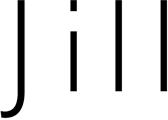
BEHIND THE SCENES:
PER KIRKEBY,
"Brick Sculptures"

BEHIND THE SCENES:
IDE TO PUGLIA
"Ceramic & Food Route",
Recent Summer 2019 Highlights

JSVC HIGHLIGHTS:
ART & LANGUAGE, LONDON

BEHIND THE SCENES:
DRAW ART FAIR LONDON

BEHIND THE SCENES:
ART & LANGUAGE, EXHIBITION AT GALERIE MICHAEL JANSSEN, Berlin

BEHIND THE SCENES:
DR. SUSANNE A. KUDIELKA,
Private art collecting is a passion
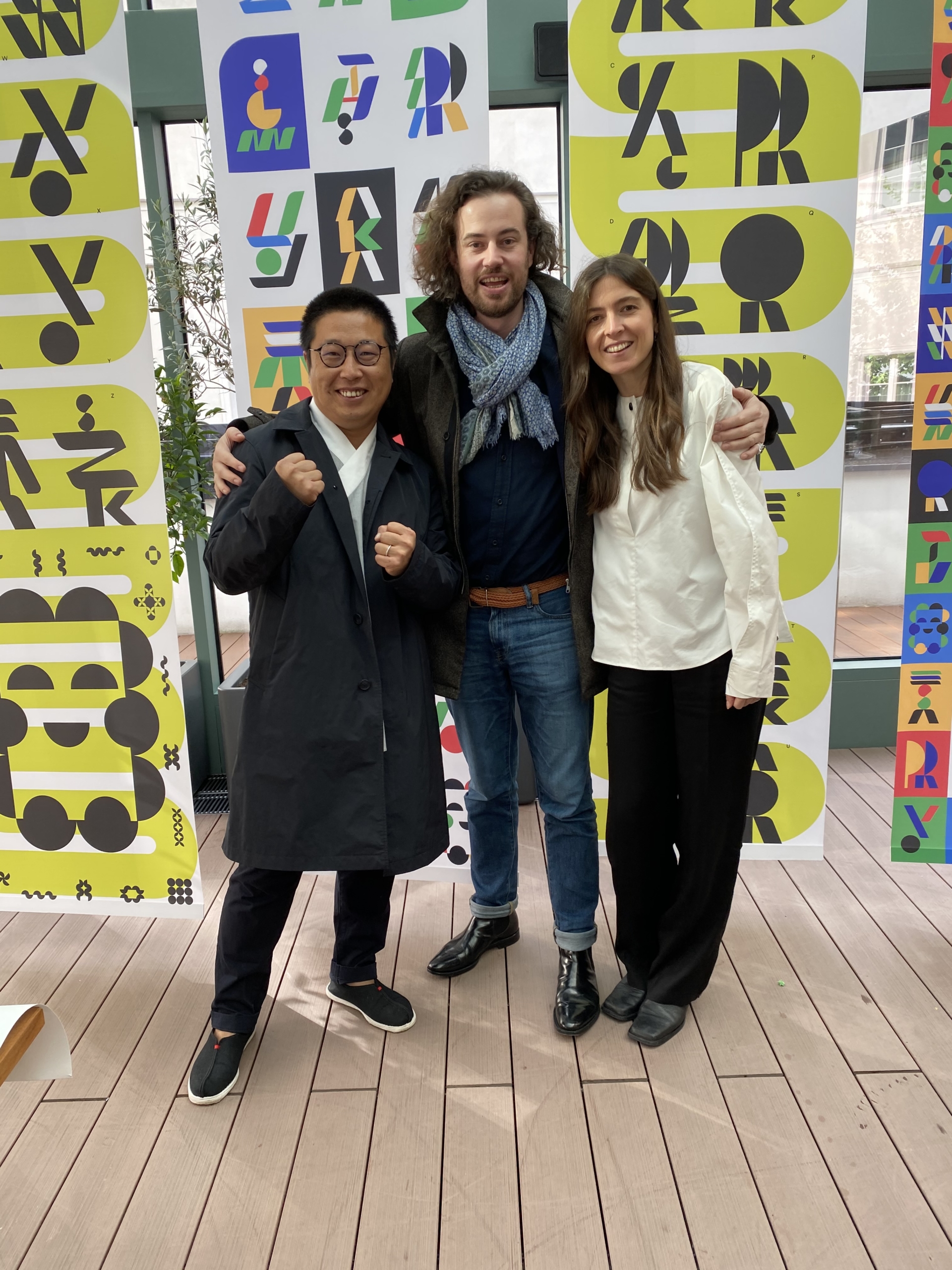
BEHIND THE SCENES:
IDE TO POLAND III
Out of the oven
Warsaw Sept 28-Oct 3
October 11th 2021

PART I
I don’t think anything prepared me for the exuberance and edgy freshness of the prototypes produced by the IDE TO POLAND, Ceramic & Food Route Expedition. After six weeks in situ, working with local makers, the three designers Eimear Ryan, Zhuo Qi and Goliath Dyevre and expert designers Mathilde Bretillot, Miska Miller-Lovegrove, Marc Bretillot, Pierangelo Caramia, with the additional input of graphic designer Robert Czerniawski pulled off an off the cuff exhibition of sparkling originality.
Arriving at the end of a project is always challenging, alliances are already formed, complicities interwoven, and the haphazard difficulties of producing something new and original in a nomadic environment are not to be minimized. As in any live performance, once the curtain goes up it is show time. When I arrived in the glass pavilion at the Raffles Europejski Warsaw Hotel inside the buildings’ elegant inner courtyard, it was a challenge from start to finish to improvise an exhibition of quality with, as is the IDE way, an economy of means.

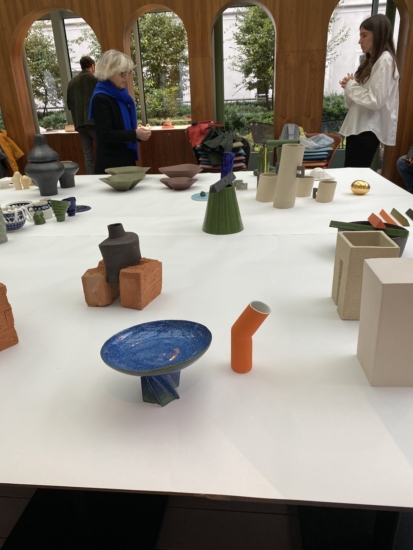

It was rock and roll. The banners of the original IDE TO POLAND alphabet created by Robert Czerniawski set the backdrop with its colourful typologies that were originally imagined from a list of ingredients, but then developed into these stylized pictographic composites that became the 26 letters of the alphabet. The long scrolls hung floor to ceiling giving us a backdrop that set the mood and presented a visual paparazzi location not far from the bar where food designer Marc Bretillot had created a “foodtail” of delicious frothy coolness. A base of our vodka—sponsored by the Polish Vodka Museum—, a whipped up steamy potato mousse topped with a spoonful on the edge of Antonius Caviar.
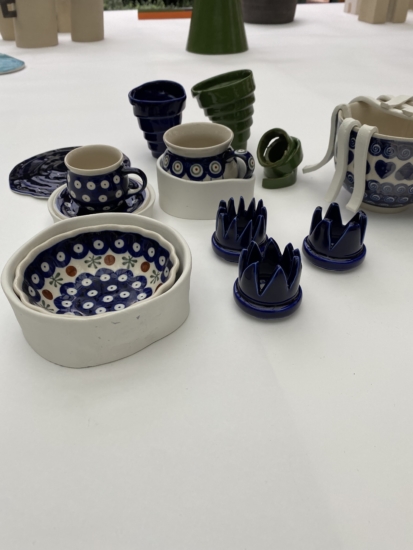
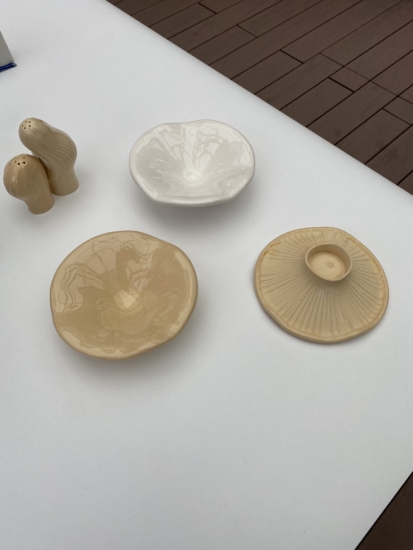

Special cups were designed and created to hold this heady drink that was warm and cold at the same time on the tongue. Salty and earthy with the mix of vegetal and sea. This first series of ten photos is a bit before the opening. You will see how the tables were turned into exhibition display surfaces with rolls of thick white paper. We used café tables, and outdoor furniture as the structures. Whatever was at hand.
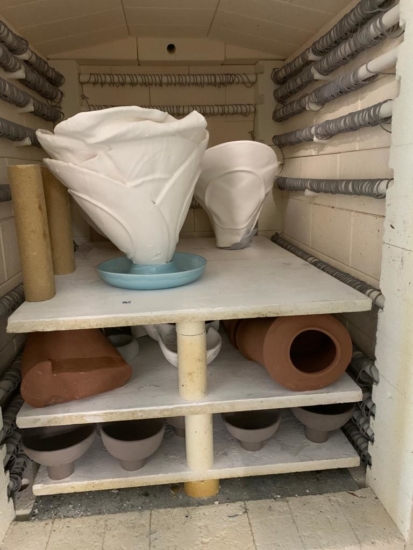

PART II
The excitement of watching objects take the stage is no different than having choreography or film presented before your eyes. They are creatures into themselves, whether cups or plates, centrepieces or quirky elements to fill a table with humor and charm. The narrative is felt in the colors and forms, the differences between smooth polished surface or rough hewn dark matte materials. Here in the Polish landscape both kinds of energies are present, there is a lot of the darkness everywhere, the daily, the unexplored, the places you walk past because the history is too stark, and you look up into the sky and wonder how it all goes on.

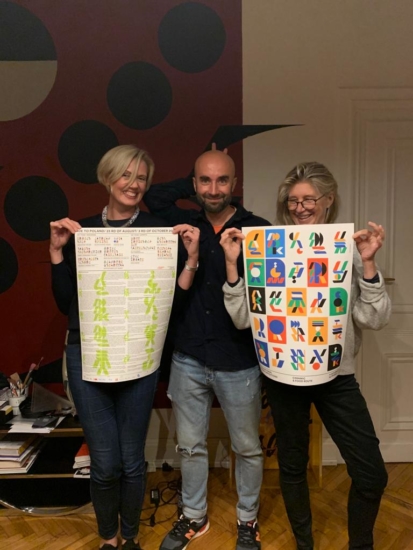
Then there is a delight in the thing itself. A story of a vodka cup that cannot be put on the table as it has no flat side, but must be passed from hand to hand at a banquet. This leads to imaginary leaps of fantasy that give rise to all kinds of vessels. Here on the table they march out and pose heroically, large and small, black or white, sometimes multitudes of colors. If you look closely you will see. Then there are the subtle elegance of Miska Miller-Lovegrove’s interpretation of mushrooms now turned into bowls of any size, Mathilde Bretillot’s simple ceramic bottle with a golden apple on the summit, Pierangelo Caramia’s monument to the moment, a concrete portal supporting a golden plate.
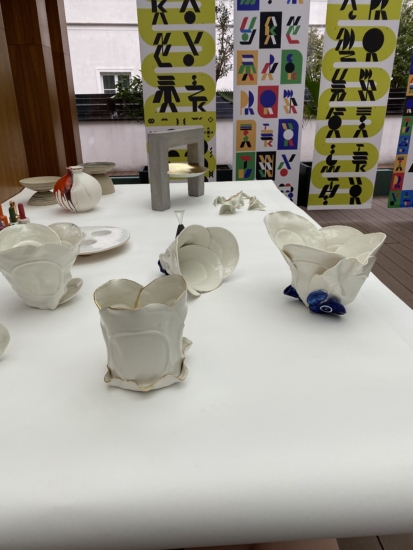

PART III
The game of the Apple and the Goose designed by Marc Bretillot and Laurent d’Estrées was used in our partner Epoka restaurant dinners, while a juicy beet platter designed by Goliath Dyevre lets its juice create the color of a plate. Zhuo Qi’s black vessels are held by bricks and Eimear Ryan’s delicate apple platters surprise and invite us to just pick them up and fill them with fruit. It was altogether sensational and I am still feeling the energy and strength of the designs and the makers who worked alongside pushing the envelop of what is or what could be possible. Nothing is accepted at face value, the makers are pushed by the designers beyond their own experience and the designers are pushed by the energy and creative voices they hear flying through the air at night in Poland. These works could not be produced anywhere else at any other time. That is what you feel standing there just before the opening, looking at the tables.



Six weeks earlier there would not have been the possibility of any of these objects being in the world, and here as if by magic, we have a symphony orchestra all playing together. Utterly amazing.



© All photographs by JSVCprojects
More info:
IDE TO POLAND in collaboration with @creativeprojectfoundation
Part of CERAMIC & FOOD ROUTE
Co-produced with: @fondationmartell
Designers: @goliathdyevredesign @argot_studio @zhuo.qi
Co-creative direction: @mathildebretillot @miskamillerlovegrove
IDE Experts: @jsvcprojects #marcbretillot @pierangelo.caramia @laurentdestrees
Producer: @ankasimone
Sponsors and Partners: Adam Mickiewicz Institute @culture_pl
Institut Français de Varsovie @if_officiel @institut_francais_de_varsovie @raffleseuropejski @autor_rooms
Polish Vodka Museum @polishvodkamuseum
Food: @restauracjaepoka @antoniuscaviar
Academic: @schoolofform
Ceramists: @majolika_nieborow @dominika_donde @moskoceramics
Communication: @14septembre
Media partner: @kukbuk_official
